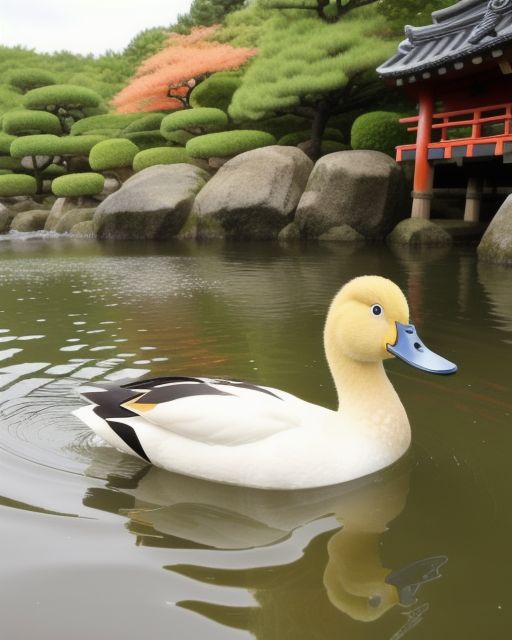Understanding “Nemawashi” and “Duck Paddling” is crucial for grasping Japanese business culture and social customs.
1. Nemawashi (根回し)
“Nemawashi” refers to the act of informally discussing and building consensus among stakeholders before making a formal decision or engaging in negotiations. It literally means “preparing the roots” when transplanting a tree, signifying preparatory work to ensure things proceed smoothly.
Characteristics and Purpose:
- Informal Prior Adjustment: Before formal meetings or negotiations, individuals privately contact key people and stakeholders to gauge their opinions and reactions.
- Smooth Consensus Building: Aims to prevent disagreements or unexpected opposition during the main event, facilitating smooth decision-making and consensus.
- Addressing Opposition: Identifies objections or concerns beforehand, allowing for countermeasures or alternative proposals.
- Relationship Building: Fosters trust through informal discussions.
- Information Gathering: Gathers true intentions and underlying circumstances that may not be apparent officially.
- Reflection of Japanese Collectivist Culture: Rooted in the Japanese culture that values harmony and avoids direct confrontation.
Benefits:
- Smoother meeting and negotiation progress.
- Easier implementation after decisions are made (due to prior consensus).
- Less likely for dissatisfaction or conflict to surface.
- Fosters smoother interpersonal relationships.
Drawbacks/Criticisms:
- Decision-making Delays: Can be time-consuming, delaying decisions.
- Lack of Transparency: Formal discussions can become mere formalities, making it seem like everything is decided informally, leading to a lack of transparency.
- Pre-determined Outcomes: Decisions made through nemawashi may simply be rubber-stamped in official settings.
- Reinforcement of Top-Down Approach: Can stifle diverse opinions and reinforce hierarchical decision-making.
- Difficulty for Outsiders: Being a unique Japanese custom, it can be hard for foreigners to understand.
Nemawashi is a very common practice in Japanese organizational management, and for better or worse, it’s a defining characteristic of the decision-making process in Japanese society.
2. Duck Paddling (アヒルの水掻き)
“Duck Paddling” is a metaphor describing a situation where someone appears graceful or effortless on the surface, but is diligently working hard underneath. It comes from the image of a duck gliding smoothly on the water while its webbed feet frantically paddle below the surface.
Characteristics and Meaning:
- Unseen Effort: Significant effort and hardship expended behind the scenes, invisible to others.
- Hidden Struggles: The quiet, unnoticed work behind success or achievement.
- Maintaining Composure: Keeping a calm demeanor even in difficult situations, without showing stress or struggle.
- Professionalism: A stance of not revealing the extent of one’s efforts to customers or external parties, always aiming to present the best performance.
- Perfectionism/Pride: Can sometimes stem from a desire to appear perfect or maintain a façade.
Examples:
- Successful Presentation: The perfect presentation was the result of dozens of hours of preparation and practice behind the scenes.
- New Service Launch: Behind a seemingly seamless new service, the development team worked tirelessly overnight to fix bugs and test.
- Customer Service Smile: Maintaining a cheerful demeanor even with unreasonable customers, despite internal stress.
- Project Management: A project manager working diligently behind the scenes, making various adjustments and solving problems to meet deadlines.
Social and Cultural Context:
- “The nail that sticks out gets hammered down” culture: Related to the Japanese culture of humility and not boasting about one’s efforts, as well as the societal tendency to suppress those who stand out.
- Concept of “In-toku” (陰徳): The idea that performing good deeds in secret is highly regarded.
- Professionalism: Especially in service industries and specialized professions, there’s a strong expectation to “not show the customer your struggles.”
“Duck Paddling” is a common behavioral principle observed in various aspects of Japanese workplaces and daily life. While it highlights individual effort and perseverance as positive traits, it can also lead to excessive burden and stress.
In summary:
“Nemawashi” is about “informal, prior coordination in the decision-making process,” deeply rooted in Japanese culture’s emphasis on group harmony and smooth consensus building.
“Duck Paddling” refers to “appearing calm on the surface while making immense efforts below the surface,” reflecting the Japanese cultural value placed on unseen effort and humility.
These two concepts are highly useful for understanding how things operate within Japanese organizations and society.


